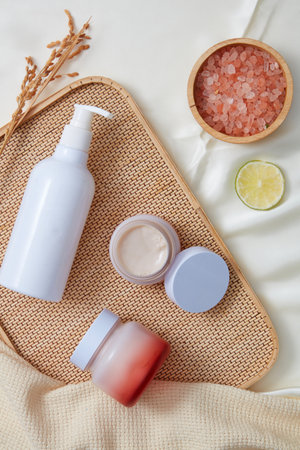Understanding Cellulite: What It Is and Why It Matters
Cellulite is a term that many Britons are familiar with, yet it remains widely misunderstood. In essence, cellulite refers to the dimpled or orange peel appearance of skin, most commonly found on the thighs, buttocks, and sometimes the abdomen. This condition is caused by the interaction between connective tissue in the dermatological layer beneath the skin’s surface and the layer of fat just below it. When fat cells push against the skin while connective cords pull down, this uneven tension creates the characteristic puckering effect.
In the UK, misconceptions about cellulite abound. A prevalent myth is that only those who are overweight develop cellulite; in reality, it affects people of all shapes and sizes—including those who maintain a healthy lifestyle. Some believe that cellulite is purely a result of poor diet or lack of exercise, but genetics, hormones, age, and even stress levels play significant roles in its development. Additionally, there’s a common misconception that men are immune to cellulite; while it is far less common due to differences in skin structure and fat distribution, men can still experience it.
The reason cellulite draws so much attention in Britain is twofold: cultural beauty standards and the prevalence of misleading marketing claims. The British media often portrays smooth, unblemished skin as the ideal, leading many to feel self-conscious about visible cellulite. Furthermore, with an abundance of products promising miraculous results, it’s easy to become both hopeful and sceptical when seeking treatments. Understanding what cellulite truly is—and dispelling persistent myths—forms an essential foundation for making informed decisions about available treatments and setting realistic expectations for results.
2. Popular Cellulite Treatments Available in Britain
When it comes to addressing cellulite, Britons have access to a wide array of treatments, spanning from professional salon therapies and medically supervised interventions to convenient at-home solutions. Below, we break down the most popular options in the UK marketplace, weighing their typical costs, effectiveness, and what you can realistically expect.
Salon-Based Cellulite Therapies
Many high-street salons and clinics across Britain offer specialised cellulite treatments. These often involve non-invasive technologies designed to improve skin texture and reduce the appearance of dimpling.
| Treatment Type | Description | Typical Cost (GBP) | Frequency |
|---|---|---|---|
| Endermologie | Mechanical massage using rollers and suction to stimulate circulation and lymphatic drainage | £50–£100 per session | Weekly or bi-weekly courses recommended |
| Radiofrequency (RF) Therapy | Uses heat energy to encourage collagen production and tighten skin | £80–£200 per session | 4–8 sessions usually advised |
| Cryolipolysis (“Fat Freezing”) | Cools fat cells to break them down; can improve skin smoothness as a secondary effect | £150–£400 per area/session | Usually 1–3 sessions required |
| LPG Lipomassage | A branded mechanised massage similar to Endermologie with focus on targeted areas | £60–£120 per session | Multiple sessions needed for visible results |
Medical Interventions in the UK
Some individuals pursue more intensive medical options, generally performed by qualified dermatologists or aesthetic doctors. These tend to offer longer-lasting outcomes but come at a higher price point and may require downtime.
| Treatment Type | Description | Typical Cost (GBP) | Considerations |
|---|---|---|---|
| Subcision (Cellfina) | A minor surgical procedure releasing fibrous bands under the skin causing dimpling | £1,500–£3,000 per treatment area | Local anaesthetic; potential bruising/swelling post-procedure; long-lasting results for many patients |
| Laser Therapy (e.g., Cellulaze) | Laser fibre inserted under skin breaks up connective tissue and stimulates collagen growth | £2,000–£4,000 per treatment area | Surgical; requires qualified practitioner; single-session treatments possible with sustained improvement over months/years for some clients |
| Injectables (Collagenase Clostridium Histolyticum) | An enzyme-based injection that breaks down fibrous septae under the skin surface (available privately in some clinics) | From £300 per session/area upwards | Semi-permanent results; eligibility assessed by a specialist; limited NHS availability (mainly private sector) |
At-Home Solutions Widely Used Across Britain
If professional treatments are not within budget or desired, there are numerous over-the-counter options available at chemists like Boots or Superdrug, as well as online retailers. While these typically yield subtler effects, they remain popular for their accessibility and affordability.
Creams and Topical Products
- Caffeine-based creams: May temporarily tighten skin and reduce water retention for a smoother look.
- Retinol creams: Aim to thicken the outer skin layer over time, which can mask underlying unevenness.
D.I.Y. Massage Tools & Home Devices
- Dry brushing: A traditional method using firm bristled brushes to stimulate circulation.
- Cupping kits: Silicone cups create suction on the skin’s surface, mimicking some effects of professional massage.
- Handheld massagers: Electric or manual devices designed to break up fluid retention and encourage lymphatic flow.
A Quick Comparison of At-Home Methods vs Professional Treatments:
| Treatment Route | Main Pros | Main Cons |
|---|---|---|
| At-Home Solutions | Affordable, accessible, no downtime | Milder effects, require consistency |
| Professional Treatments | Potenially stronger results, expert guidance | Higher costs, sometimes uncomfortable/downtime required |
No matter your approach—be it professional intervention or home routine—the British market offers an impressive variety of cellulite treatments. The next step is understanding what’s realistic in terms of outcomes—something we’ll address later in this guide.

3. Separating Fact from Fiction: Myths about Cellulite
Cellulite is a topic often shrouded in misconceptions, especially within British culture where magazine headlines and social media can easily blur the lines between science and speculation. Let’s examine some of the most persistent myths surrounding cellulite, using a practical lens grounded in current evidence and everyday realities.
Myth 1: Only Overweight People Get Cellulite
This is one of the most common misunderstandings in Britain and beyond. In reality, cellulite affects people of all body types, including those who are slim and physically active. Genetics play a significant role, meaning you can have a healthy BMI and still notice dimpled skin on your thighs or buttocks. It’s not simply a matter of weight but rather how fat is distributed beneath the skin.
Myth 2: Exercise Alone Can Eliminate Cellulite
While regular physical activity offers countless health benefits and can help tone underlying muscles, it does not guarantee the elimination of cellulite. Many Brits hit the gym or take up running with hopes of ‘banishing’ cellulite, only to find that stubborn dimples persist. This is because cellulite is influenced by factors like skin thickness, connective tissue structure, and hormones—not just muscle tone or fat levels.
Myth 3: A Poor Diet Directly Causes Cellulite
The idea that eating chips or having a sweet tooth directly causes cellulite is oversimplified. Although a balanced diet supports overall skin health and circulation, there is no single food or ingredient responsible for cellulite formation. In British culture, where comfort foods are beloved, it’s important to remember that moderation is key but so is understanding the limits of diet’s influence on cellulite.
The Role of Genetics
Perhaps the biggest factor in whether you develop cellulite is your genetic makeup. If your parents or grandparents had noticeable dimpling, you’re more likely to see it too, regardless of lifestyle choices. While this isn’t the cheeriest news, it does help shift focus away from self-blame and towards realistic expectations regarding treatments and results.
Busting More Myths: Creams and Quick Fixes
The British market offers an array of topical creams and home gadgets promising quick fixes. However, scientific evidence supporting dramatic results from these products remains limited. Most dermatologists agree that while some creams may temporarily smooth skin through hydration or mild irritation, they do not address the structural causes of cellulite.
In summary, separating fact from fiction empowers us to make informed decisions about treatments—steering clear of miracle cures and focusing instead on approaches backed by credible research and realistic outcomes.
4. Scientific Evidence: What Really Works?
In the realm of cellulite treatments, separating fact from fiction is essential for British consumers keen to make informed choices. This section examines the latest scientific research and clinical trials conducted both in the UK and internationally, with a focus on efficacy and safety—two factors that matter most when considering cosmetic or medical interventions.
Understanding the Science Behind Cellulite Treatments
Cellulite, medically known as gynoid lipodystrophy, is a complex issue influenced by genetics, hormones, lifestyle, and connective tissue structure. While numerous treatments are available across Britain, not all have robust scientific support. Recent peer-reviewed studies and NHS guidance highlight significant differences in outcomes between various approaches.
Summary Table: Evidence-Based Cellulite Treatments
| Treatment Method | Scientific Support | Efficacy (Clinical Results) | Safety Profile | NHS/UK Guidance |
|---|---|---|---|---|
| Topical Creams (e.g., caffeine, retinol) | Limited/Moderate | Mild improvement; short-term effect | Generally safe; minor skin irritation possible | Not routinely recommended |
| Laser & Radiofrequency Devices | Strong (for some devices) | Noticeable reduction after multiple sessions; effects last months | Safe in regulated clinics; mild discomfort or redness | Only in registered clinics; not NHS funded for cosmetic use |
| Manual Massage & Endermologie® | Moderate (short-term benefits) | Smoother skin temporarily; no long-term change to fat structure | Non-invasive; low risk of bruising or soreness | No official recommendation; widely available privately |
| Liposuction & Subcision Surgery | Mixed (more for fat removal than cellulite) | Potentially significant but higher risk; scarring possible | Surgical risks apply; only suitable for selected cases | NHS rarely offers for cosmetic reasons; private clinics must be CQC-registered |
| Lifestyle Interventions (diet/exercise) | Strong (general health benefit) | Mild improvement in appearance; no direct effect on cellulite structure | Very safe; positive side effects for overall health | Recommended as first-line self-management strategy |
The British Clinical Perspective: What Do Experts Recommend?
The NHS and leading dermatologists in Britain generally advise caution regarding miracle cures. While some treatments can improve skin texture temporarily—such as laser therapy and massage—none offer a permanent solution. Safety is paramount, so seeking regulated clinics and practitioners registered with the Care Quality Commission (CQC) or relevant professional bodies is strongly advised.
The consensus from recent UK-based trials suggests combining realistic expectations with evidence-backed methods. Lifestyle modifications remain a cornerstone, while more invasive procedures should only be considered after thorough consultation with a qualified specialist.
If you’re considering treatment, ask your provider about published clinical evidence specific to their method, potential side effects, and whether results have been validated in peer-reviewed British studies. Staying informed is your best defence against costly myths and marketing hype.
5. What to Expect: Real Results and British Testimonials
If you’re considering tackling cellulite, it’s vital to set realistic expectations and understand what the journey truly looks like for people in Britain. While adverts may promise dramatic transformations overnight, the reality is usually more nuanced. Here, we share honest experiences and case studies from across the UK, reflecting the diversity of approaches and outcomes.
Understanding the Typical Outcomes
Most Brits who pursue professional treatments—like radiofrequency therapy, laser treatments, or manual lymphatic drainage—report gradual improvements rather than instant miracles. The majority notice a smoother skin texture and a modest reduction in visible dimpling after several sessions. However, very few experience complete elimination of cellulite, as genetics, age, and lifestyle factors play significant roles.
Case Studies from Across the UK
Emma, 34, Manchester: Laser Treatment
Emma tried a series of six laser therapy sessions at a reputable Manchester clinic. She reports her thighs felt firmer and looked noticeably smoother after three months. Emma notes that maintenance treatments were necessary to sustain results but appreciates the boost in confidence she gained.
Raj, 42, London: Topical Creams & Massage
Raj experimented with over-the-counter creams combined with regular dry brushing and massage. He observed a subtle difference in skin tone but found that results plateaued quickly. Raj’s advice: “Don’t expect miracles from creams alone—combining approaches works best.”
Sophie, 28, Glasgow: Lifestyle Changes
Sophie focused on dietary adjustments and consistent exercise alongside hydration. Over six months, she saw moderate improvement in her cellulite and felt healthier overall. Sophie shares: “It’s about small wins rather than dramatic changes.”
The British Perspective on Cellulite Solutions
Across these testimonials, a common thread emerges: most people find that a combination of methods yields the best results. There is also a strong sense of pragmatism among Brits; while aesthetic improvements are welcomed, there’s wide acceptance that cellulite is normal—even among those who are fit and active.
Setting Honest Expectations
If you decide to pursue treatment in Britain, remember that patience and consistency are key. Improvements tend to be incremental rather than immediate. Consult qualified practitioners for professional interventions and be wary of bold marketing claims. Ultimately, many in the UK choose to embrace their bodies while making informed choices about available treatments.
6. Choosing the Right Approach in the UK
When it comes to selecting a cellulite treatment that truly fits your needs in Britain, its essential to balance personal preferences, budget considerations, lifestyle factors, and what’s locally available. The British market offers a diverse range of options, from high-street creams and at-home devices to advanced clinic-based procedures. Here’s how to navigate these choices with a practical and realistic mindset.
Understanding Your Budget
Cellulite treatments in the UK can vary widely in cost. Over-the-counter creams and basic massage tools are generally the most affordable, starting from as little as £10-£30. Professional treatments like radiofrequency or laser therapies at private clinics can run into hundreds or even thousands of pounds per session, especially in larger cities like London or Manchester. It’s worth considering not just the upfront price but also the need for multiple sessions and ongoing maintenance when budgeting.
Aligning with Your Lifestyle
If you have a busy schedule or prefer discreet solutions, home-use devices and topical products may be more suitable. These allow for flexibility and privacy, fitting around work or family commitments. Alternatively, if you have time to commit to regular appointments and want expert guidance, seeking out a reputable aesthetic clinic might yield more noticeable results—particularly if you combine professional treatments with lifestyle changes such as improved diet and exercise.
Regional Availability Matters
The range of available treatments can differ significantly depending on where you live in Britain. Urban areas tend to offer a wider selection of advanced technologies and experienced practitioners, whereas rural locations may have fewer specialist clinics but still provide access to quality over-the-counter products through pharmacies like Boots or Superdrug. It’s advisable to research local options and read reviews from other Britons before committing.
Consultation Is Key
No matter which route you’re considering, booking an initial consultation—either with your GP for general advice or with a qualified skincare professional—can help tailor your approach. Many clinics offer free or low-cost assessments where you can discuss your goals, medical history, and expectations. This is particularly important if you’re considering invasive procedures or have underlying health conditions.
Embracing Realistic Expectations
Perhaps most importantly, remember that no treatment currently guarantees permanent removal of cellulite. Results vary from person to person, and maintenance is often required. Look for providers who are transparent about outcomes rather than those who promise miracle cures—British consumers tend to value honesty and straightforwardness over hype.
In summary, choosing the right cellulite treatment in the UK is about informed decision-making: weighing up cost, convenience, lifestyle compatibility, and regional accessibility while consulting trusted professionals. By taking this pragmatic approach rooted in British sensibility, you’re more likely to find a solution that genuinely suits your needs—and delivers real-world results.


